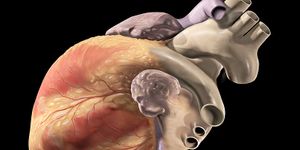Cannabinoids Could Inhibit Tau Hyper-Phosphorylation in Early Alzheimer's Disease
Alzheimer’s Disease (AD) is a fairly well-known neurodegenerative disease and distinguishable from the normal aging process; however, important aspects of the physiological process and pathology of the disease remain unknown. With the aging of populations and the ability to live longer lives, understanding these mechanisms is driving research. Much of what is known has come from post mortem studies on brain tissues of those suspected and identified as having Alzheimer’s Disease, rather than another form of dementia. Updates in knowledge and understanding of the disease, along with technology, have helped clinicians to accurately diagnose AD, however it is challenging. Additionally, there is no current method or treatment to stop progression of the disease.
Some of the pathological hallmarks of AD include the presence of fibrillary beta-amyloid (Aβ) plaques, or senile plaques, formed when the Aβ precursor protein (APP) separates and the presence of what are called neurofibrillary tangles which form when the protein tau is inappropriately hyper-phosphorylated or when a nitrate is included on the tau protein. Some hypothesize that these changes in certain AD cases can be linked to genetic mutations. Once these abnormal proteins begin to accumulate, disease progression moves more rapidly, and symptoms become more pronounced in an individual. Genetic factors are not only the considerations for the development of AD; environmental factors, physiological factors and additional functional defects within the human body can contributed to AD development or exacerbation of symptoms when combined with other aforementioned reasons.
AD is age related, meaning that there are stages of disease progression, and it is suspected that the disease, or measurable pathological process, typically begins in middle age with those neurofibrillary tangles comprised of abnormal tau proteins. These tangles develop slowly in a physiological process known as fibrosis. Incrementally, these abnormal tau proteins build upon themselves, like a mason stacking bricks to build a wall, and take up intracellular space in the neuron causing ultimate degeneration of the processes necessary for neuronal cell function. The neuron shrivels up and its axons and dendrites shrink back from their nearby cell connections. This prevents the normal neuronal circuitry of the brain to work properly; neuron to neuron connectivity and proximity is the fundamental basis of information transfer; increasing numbers of these tangles reduces the ability of those critical connections to transmit signals and therefore affects memory and recall.
Once these degenerative changes occur, they are irreversible. Currently, there is no known product or compound that can undo the damage to those neurons. Because of this, researchers have focused on the early stages of the disease before symptoms begin to manifest themselves. The premise is that perhaps there are opportunities to reverse minimal damage to the neuronal spaces before a neurofibrillary tangle results. Researchers have been investigating the Endocannabinoid System (ECS) because the receptors of the ECS are abundant in the brain and throughout the body; the ECS contributes to emotion, memory, cognition, motor control, feeding, and pain perception as well as energy balance and metabolism in the peripheral systems of the body. Additionally, it is known that neuronal damage can increase the production of endocannabinoids which has led to speculation about cannabinoid potential for neuronal protection and possibly healing properties.
There have been recent descriptions in the literature that in vitro studies of cannabidiol (CBD), arachidonyl-2’-chloroehylamide (ACEA), and WIN55,212-2 administration on affected neuronal cell cultures demonstrated inhibition of tau protein hyper-phosphorylation which led to reduced cell death. Another study utilized the approved medicine Sativex® which is a mixture of natural extracts of delta,9-THC and CBD on human tau overexpressing mice. The prolonged exposure resulted in significant reduction of neurofibrillary tangle development.
There are additional areas of AD research focused on the ECS, endocannabinoids, receptors, signaling processes, cellular mechanisms, and exogenous cannabinoid roles for potential therapeutic application.
This great 4 minute video briefly explains the processes involved in AD development.
Sources:









